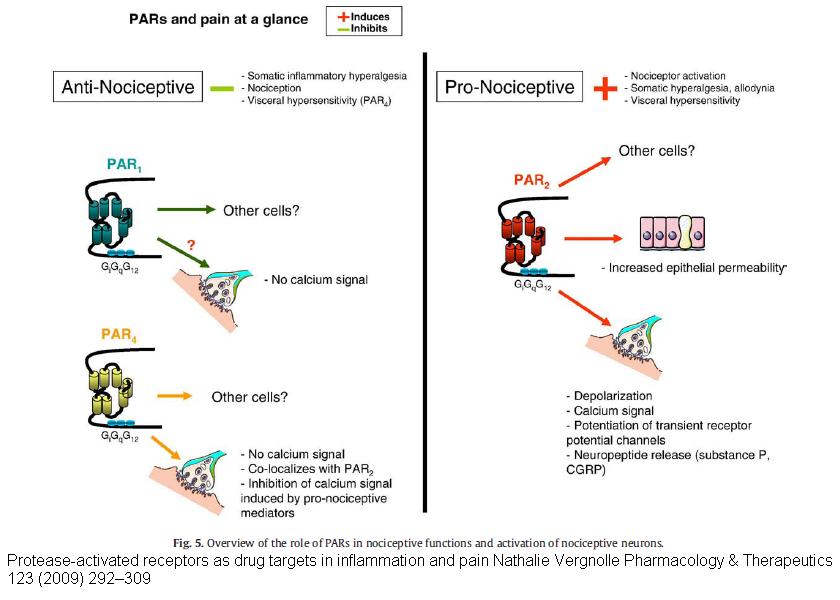Proteases are inflammatory chemicals like cytokines. They were first described in 1991 and have become a target for therapy. Now they are connected to chronic prostatitis.
- Proteases work by turning on various PAR receptors by cleaving off a part of the receptor
- The induce swelling, vascular dilatation, migration of inflammatory cells
- There is a series of “Protease Activated Receptors” – some pro and some anti-inflammatory. There seem to be good PAR1 anti-inflammatory and bad PAR2 inflammatory for instance -and there are various places treatments can be targetted:
-
- Function of these chemicals and receptors are linked with:
– lung allergy, inflammation, infection and fibrosis
– brain and spinal inflammation – especially after ischemia and with HIV infection
– Skin inflammation
– Colitis
– Kidney inflammation and damage
– and of course Arthritis
- Function of these chemicals and receptors are linked with:
- “PAR2 agonists caused spontaneous pain and spinal nociceptor activation as well as visceral hyperalgesia” – so helping bad proteases causes spinal and gut pains – their activity is higher in irritable bowel biopsies for example
- PAR4 – another good protease receptor – inhibits irritable bowel and may be a target for treatment
Now it appears if one wants to tackle chronic inflammatory diseases, you have to deal with proteases.
Though cytokine levels are elevated in prostatic secretions and in some studies correlate with symptom Proteases appear to play a role:
J Urol. 2010 Aug 17. [Epub ahead of print]
Prostate Secretions From Men With Chronic Pelvic Pain Syndrome Inhibit Proinflammatory Mediators
Thumbikat P, Shahrara S, Sobkoviak R, Done J, Pope RM, Schaeffer AJ abstract here
- They used the NIH Chronic Prostatitis Symptom Index scored as related to severity
- They took prostatic secretions and checked to see what effect cytokines would have on their monocyte cells – usually they do lots – but they did nothing.
- Reason for the lack of effect was “The mechanism underlying this apparent ability to modulate proinflammatory cytokines involves heat labile extracellular proteases that mediate the inhibition of immune and prostate epithelial cell function.”
- Was this the good proteases or that the bad had already done as much effect as they were going to do?
Comment – it looks like chronic prostatitis might be a complex inflammatory process with various factors involved – the plot thickens.
Treatment of Protease activated receptors are going to be a 21st century treatment of a variety of inflammatory conditions – some you wouldn’t even think about like chronic prostatitis.
This had to be one of the most difficult blog notes to do – very egghead but probably foretelling of things to come…
any comments?

